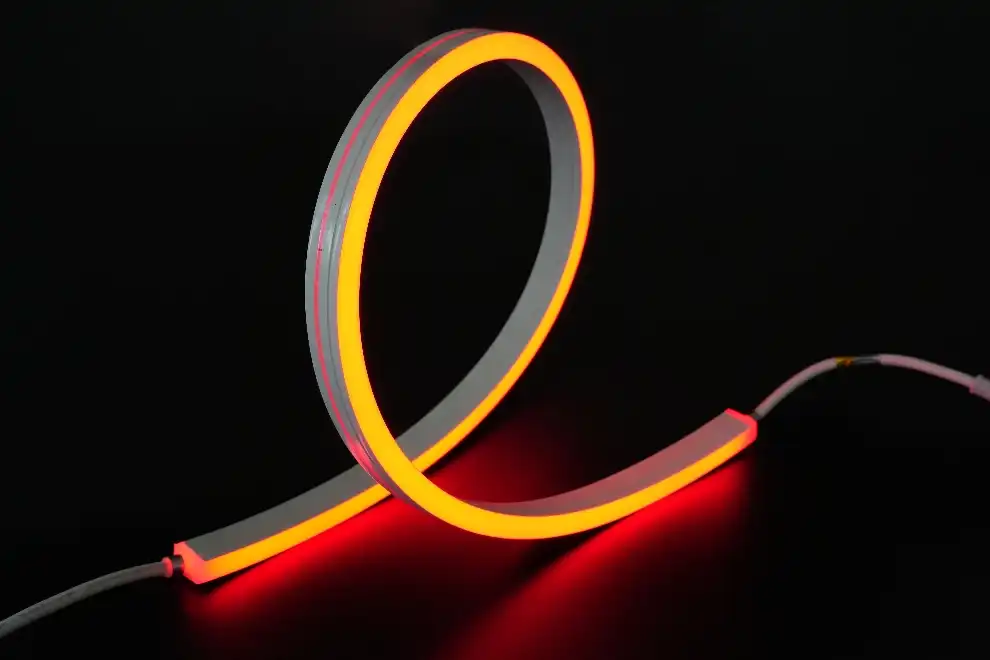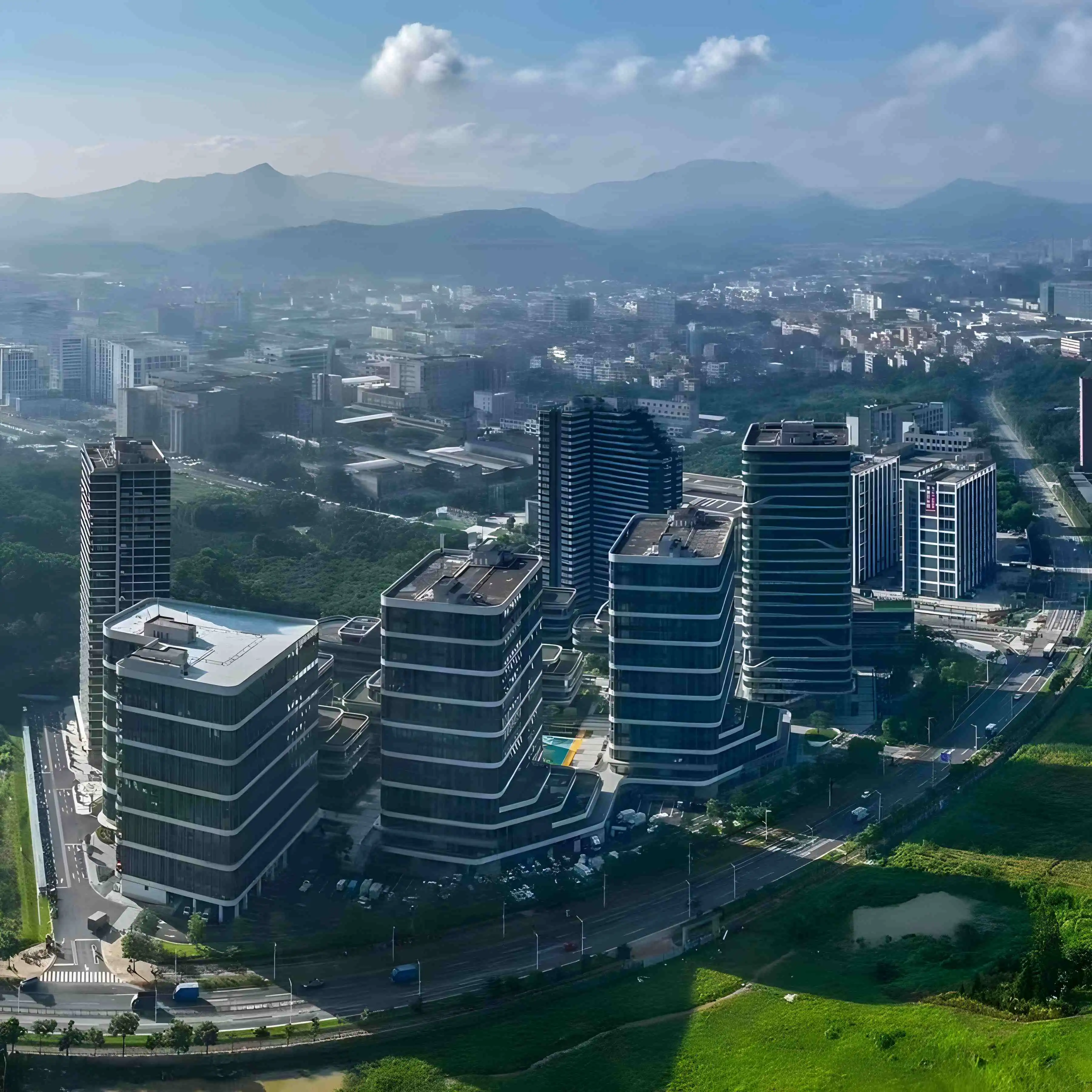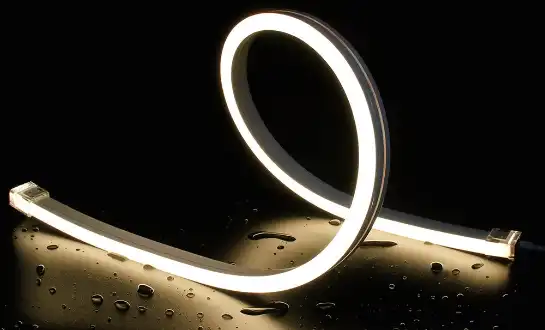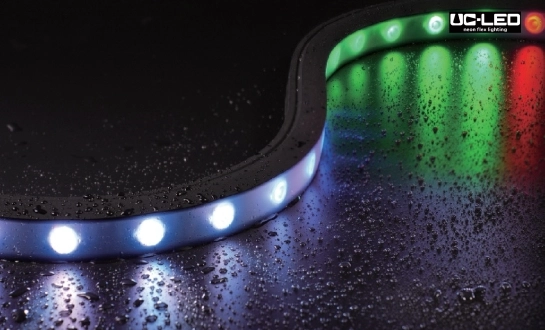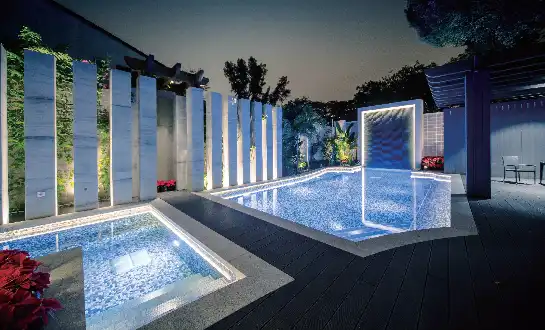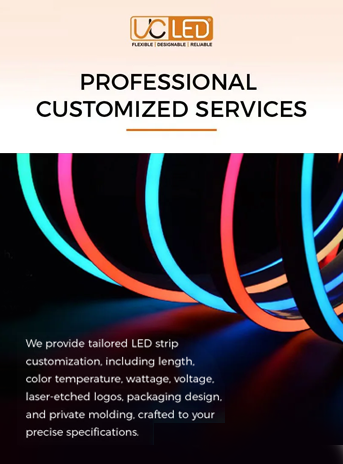Understanding LED Neon Flex Technology and Its Durability
The Composition of LED Neon Flex Strips
LED neon flex strips are a modern lighting solution that combines the flexibility of traditional neon with the efficiency of LED technology. These innovative lighting products consist of a series of LED chips encased in a flexible silicone tube, creating a continuous line of light that mimics the appearance of traditional neon. The core components include high-quality LED beads, often utilizing 6060 SMD technology, which are mounted on a flexible printed circuit board (FPCB).
The outer casing of LED neon flex strips is typically made from food-grade, environmentally friendly silicone material. This silicone enclosure not only protects the internal components but also contributes to the strip's durability by offering resistance to yellowing, heat, and various environmental factors. The integration of LEDs and lenses in a single package enhances heat dissipation, which is crucial for maintaining the longevity of the product.
Factors Affecting LED Neon Flex Lifespan
Several key factors influence the lifespan of flexible LED neon strips. The quality of LED chips used is paramount, with reputable manufacturers often providing LM80 test certification to validate the longevity of their LEDs. The design of the circuit board and heat management system plays a critical role in preventing premature failure due to overheating.
Environmental factors also significantly impact durability. High-quality LED neon flex strips are designed to be salt-resistant, acid and alkali resistant, flame-retardant, and UV-resistant, making them suitable for use in harsh outdoor conditions. The IP rating (such as IP65 or IP67) indicates the level of protection against dust and water ingress, which is crucial for outdoor applications.
The power supply and control systems used with LED neon flex strips can also affect their lifespan. Constant voltage (CV) control modes help maintain stable performance, while the use of appropriate power supplies prevents voltage fluctuations that could damage the LEDs over time.
Best Practices for Installation and Maintenance
Proper Installation Techniques
Correct installation is vital for maximizing the lifespan of LED neon flex strips. When installing these versatile lighting solutions, it's essential to follow manufacturer guidelines meticulously. Begin by ensuring a clean, dry surface for mounting. Many LED neon flex strips come with adhesive backing, but for added security, especially in outdoor or high-traffic areas, consider using mounting clips or channels.
Pay close attention to bending radii when shaping the LED neon flex. While these strips are designed to be flexible, excessive bending can damage internal components. Most manufacturers specify a minimum bending radius, typically around 60mm, which should be strictly adhered to. For complex designs or tight corners, opt for pre-formed pieces or connectors designed for sharp turns.
Proper wiring and connections are crucial. Ensure all electrical connections are secure and waterproof, particularly for outdoor installations. Use compatible connectors and sealants recommended by the manufacturer to maintain the strip's IP rating. It's also important to calculate and provide adequate power supply, ensuring even distribution along the length of the strip to prevent voltage drop and uneven lighting.
Routine Maintenance and Care
Regular maintenance is key to preserving the performance and extending the life of LED neon flex strips. Establish a routine cleaning schedule to remove dust, debris, and other contaminants that can accumulate on the surface. For indoor installations, a soft, dry cloth is often sufficient. For outdoor strips, use a mild, non-abrasive cleaner and ensure the strips are completely dry before re-powering.
Periodic inspections are crucial. Check for any signs of damage, such as cracks in the silicone casing, water ingress, or discoloration of the LEDs. Pay special attention to connection points and power supplies, as these are common failure points. If any issues are detected, address them promptly to prevent further damage.
In environments with extreme temperature fluctuations or high humidity, consider implementing additional protective measures. This might include using specialized enclosures or applying additional sealants to vulnerable areas. For strips installed in areas with high UV exposure, monitor for any signs of degradation in the silicone casing, which can lead to reduced light output or water ingress over time.
Optimizing Environmental Conditions for Longevity
Temperature Management and Heat Dissipation
Effective temperature management is paramount in extending the lifespan of LED neon flex strips. LEDs generate heat during operation, and excessive heat can significantly reduce their efficiency and lifespan. To optimize heat dissipation, consider the following strategies:
Firstly, ensure adequate airflow around the LED neon flex strips. When installing in enclosed spaces, incorporate ventilation solutions to prevent heat buildup. For outdoor installations, avoid placing the strips in direct sunlight or areas prone to extreme temperature fluctuations.
The mounting surface can also play a role in heat management. Mounting LED neon flex strips on materials with good thermal conductivity, such as aluminum profiles, can help dissipate heat more effectively. Some manufacturers offer specialized heat-sink mounting solutions designed specifically for their LED neon flex products.
Consider implementing intelligent control systems that can adjust brightness based on ambient temperature. Dimming the LEDs during periods of high heat can help prevent overheating and extend their operational life. Additionally, some advanced flexible LED neon strips incorporate built-in temperature sensors and protection circuits that automatically adjust output to prevent damage from excessive heat.
Protection from Environmental Stressors
While high-quality LED neon flex strips are designed to withstand various environmental challenges, taking additional protective measures can further extend their lifespan. In coastal areas or industrial environments where corrosive elements are present, consider applying additional protective coatings or enclosures to shield the strips from salt spray or chemical exposure.
For installations in areas prone to physical impacts, such as public spaces or low-hanging applications, consider using protective covers or channels. These not only shield the strips from accidental damage but can also provide an additional layer of UV protection, which is particularly beneficial for outdoor installations.
Moisture protection is crucial, especially for outdoor applications. While many LED neon flex strips boast high IP ratings, additional measures can be taken to enhance water resistance. Ensure all connection points and cut ends are properly sealed with silicone or specialized end caps. In areas with high humidity or frequent rain, consider installing the strips at a slight angle to prevent water accumulation.
Lastly, be mindful of potential electromagnetic interference (EMI) in certain environments. While not directly related to environmental stressors, EMI can affect the performance and longevity of LED drivers and control systems. In environments with high EMI, such as near industrial equipment or strong radio transmitters, consider using shielded cables and EMI-resistant power supplies to protect the LED neon flex system.
Conclusion
Maximizing the lifespan of LED neon flex lights requires a comprehensive approach that encompasses proper installation, regular maintenance, and thoughtful environmental management. By understanding the technology behind these versatile lighting solutions and implementing best practices in their use and care, you can ensure that your LED neon flex strips continue to provide vibrant, efficient illumination for years to come.
For more information on high-quality LED neon flex strips and expert advice on their installation and maintenance, don't hesitate to reach out to us at Linda@uc-led.com. Our team of lighting professionals is always ready to help you make the most of your LED lighting solutions.
